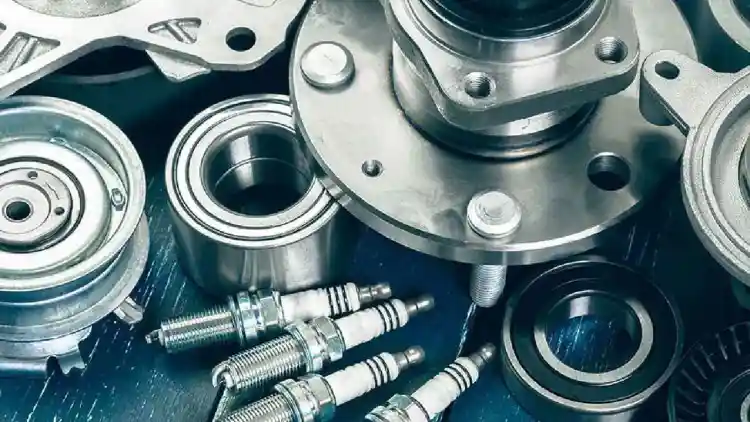- Top Factors for Choosing a Car
- Popular Car Styles Explained
- Smart Car Buying Steps
- Daily Car Care Tips
- Latest Car Trends (2025)
- FAQ
Ready to find your dream car? Our 2025 guide helps you choose the perfect ride. Discover smart buying tips, car care secrets, and the latest trends to drive away happy.
Top Factors for Choosing a Car
Choosing a new car can feel like a big task. Think about what you really need in your next vehicle. This will help you narrow down your choices and find the best match for your daily life.
Understanding Your Car Needs
Before you start looking, sit down and make a list. What do you absolutely need in your car? What would be nice to have? Thinking about these things upfront saves a lot of time later.
How many seats do you need? If you have a big family or often drive friends, more seats are important. Maybe a smaller car is fine if it's just you or you and one other person.
What will you use the car for? Do you drive mostly in the city for short commutes? Or do you take long trips on highways every weekend? Your driving purpose will affect what kind of car is best.
What's your total budget? This includes not just the car's purchase price but also its running costs each year. Think about fuel, insurance, and service. Setting a clear budget helps you stay on track.
Comparing Fuel Types
Cars come with different ways to power them. Each option has its own benefits and things to consider for your wallet and the environment. Consider how much you drive and what kind of fuel is easy for you to get.
Power Type | Best For | Maintenance Cost |
|---|---|---|
Gas/Diesel | Budget-focused buyers | Medium |
Hybrid | Saving money on fuel | Medium-High |
Electric | Eco-friendly drivers | Low |
Gasoline/Diesel Cars: These are often the first choice for many buyers. They usually have a lower purchase price and you can find fuel stations everywhere. They are a good option if you want to keep initial costs down.
Hybrid Cars: Hybrid vehicles use both a gasoline engine and an electric motor. This mix helps you save fuel, especially in city driving. You might pay a bit more upfront, but you'll benefit from lower fuel bills over time.
Electric Cars (EVs): EVs run only on electricity. They are very quiet and produce no tailpipe emissions. Their running costs are very low because electricity is cheaper than fuel. While the buying price might be higher, you save a lot on fuel and maintenance.
Safety Features to Look For
Today's cars offer many advanced safety features. These systems are designed to help you avoid accidents. Always check what safety tech a car has before you buy it. It's about protecting yourself and your loved ones.
Modern vehicles should include safety systems that actively help you drive more safely:
Automatic emergency brakes: This system can detect if a crash is about to happen and apply the brakes automatically. It can help prevent or lessen the severity of front-end crashes.
Lane-keeping technology: This feature helps keep your car centered in its lane. If you start to drift without signaling, the car can gently steer itself back. This is very helpful on long highway drives.
Blind-spot sensors: These sensors warn you if there's a car in your blind spot when you're changing lanes. They use lights in your side mirrors or sounds to alert you, making lane changes safer.
Popular Car Styles Explained
Cars come in many shapes and sizes. Each style is good for different needs. Thinking about your lifestyle can guide you to the perfect body type for your next car.
Family-Friendly SUVs
SUVs are very popular for good reasons. They offer a great mix of space, comfort, and sometimes even off-road ability. Many families choose an SUV as their main vehicle.
Spacious cabin: SUVs like the Toyota HighlanderUAE Toyota HighlanderKSA Toyota HighlanderBahrain Toyota HighlanderOman Toyota HighlanderQatar Toyota HighlanderKuwait Toyota HighlanderEgypt Toyota Highlander offer lots of room inside. This means comfort for all passengers, even on long trips. You won't feel cramped.
Extra seating room: Many SUVs come with three rows of seats. This is perfect for larger families or when you need to carpool. It gives you flexibility for passengers.
Plenty of luggage capacity: SUVs have big trunks or cargo areas. You can fit sports gear, groceries, or luggage for a long road trip easily. This is a big plus for active families.
Eco-Conscious Electric Vehicles
Electric vehicles are leading the way to a greener future. They are not just good for the planet; they are also efficient and enjoyable to drive. More and more people are choosing EVs for daily use.
Battery-powered cars: These vehicles run entirely on electricity stored in their batteries. You charge them at home or at public charging stations, just like your phone.
Provide clean miles: Because they don't burn gasoline or diesel, EVs produce zero emissions from the tailpipe. This helps keep the air cleaner in our cities.
Low running expenses: The cost of electricity is generally much lower than gasoline. This means significant savings on your daily commute. Models like the Nissan LeafUAE Nissan LeafKSA Nissan Leaf are perfect for urban commutes due to their size and efficiency.
Sporty Compact Hatchbacks
Compact hatchbacks are small, nimble cars that are great for city life. They are easy to drive and park, making them a top choice for urban dwellers and new drivers. They combine practicality with a fun driving feel.
Small cars shine in crowded city streets: Their compact size makes them easy to maneuver through heavy traffic. You won't struggle with narrow roads.
Easy parking: Finding a parking spot in a busy city can be tough. Hatchbacks fit into smaller spaces, making parking much less stressful. This is a huge advantage for city living.
Agile handling: Compact cars often feel very responsive and fun to drive. Their light weight and smaller size make them quick and easy to steer around corners.
Smart Car Buying Steps
Buying a car is a significant investment. Taking a structured approach can help you get the best deal and avoid common mistakes. Follow these smart steps for a smooth purchase.
Budgeting Wisely
Before you even look at cars, figure out exactly how much you can spend. It's not just about the car's sticker price. There are many other costs that add up. Setting a total spending limit helps you make smart choices.
Determine your total spending limit, which should include all potential costs:
Vehicle cost: This is the price of the car itself. Think about whether you'll buy new or used, and what price range you are comfortable with. Remember to factor in a buffer for negotiation.
Registration fees: These are one-time government fees to officially register your car. They can be a few hundreds to a few thousands AED/SAR, depending on the car's value and type.
Yearly insurance: Car insurance is a major ongoing cost. Get quotes from different insurance providers before you buy. This will help you understand the yearly expense.
Routine service and maintenance: Cars need regular check-ups and oil changes. Set aside money for these routine services. This keeps your car running well and avoids bigger problems later.
Test Drive Checklist
The test drive is a critical part of the buying process. It's your chance to see how the car feels on the road. Don't rush it; take your time to check everything important. This is where you connect with the car.
During your test drive, assess these key points carefully:
Driving position comfort: Does the seat adjust easily? Can you reach all the controls without stretching? Is the steering wheel at a good height? Make sure you feel comfortable behind the wheel.
Visibility at junctions: When turning or pulling out, can you see clearly? Are there any big blind spots created by the car's frame? Good visibility is crucial for safety.
Safety feature responses: If the car has lane-keeping assist or blind-spot warnings, observe how they work. Do they feel helpful and not too intrusive? Test any parking sensors or cameras too.
Finalizing Your Purchase
Once you've chosen your car, it's time to talk numbers. Be confident in your negotiations. Don't be afraid to ask for a better price or some extras. Also, think about all your buying options.
Negotiate with dealerships confidently: Research the car's market value beforehand. Be polite but firm. You can often get the price down by a few thousands AED/SAR.
Consider certified pre-owned cars for major savings: These are used cars that have been inspected and often come with a warranty from the manufacturer. They offer a good balance of lower cost and reliability compared to a brand new car.
Daily Car Care Tips
Taking care of your car properly can save you money and keep it running smoothly for years. A little effort each day or week goes a long way. It also keeps your car looking good.
Maintenance Essentials
Regular maintenance is key to your car's health. It prevents small problems from becoming big, expensive ones. Follow the manufacturer's advice strictly.
Follow the car maker's schedule for important tasks:
Engine oil changes: This is one of the most important car care tasks. Fresh oil keeps your engine lubricated and clean. Check your car's manual for how often to change it.
Tire pressure checks: Properly inflated tires last longer and improve fuel economy. Check your tire pressure at least once a month. It's a quick and easy habit.
Filter replacements: Your car has various filters (air, cabin, fuel). These need to be replaced regularly to ensure clean air in the cabin and proper engine function.
Seasonal Preparation
Your car needs different kinds of care as the seasons change. Preparing your car for extreme weather ensures its reliability and your safety. Hot summers and cool winters demand specific attention.
Winter: If you live where it gets very cold, use antifreeze in your coolant system. This stops your engine's cooling system from freezing. Check your battery too, as cold weather can weaken it.
Summer: Make sure your car's AC system is working well. A faulty AC can make summer driving uncomfortable. Also, check your coolant levels to prevent overheating in hot weather.
Cleaning Hacks
Keeping your car clean is not just for looks. Regular cleaning protects its paint and interior materials from wear and tear. It also makes your car a nicer place to be.
Monthly interior/exterior cleanings: Wash your car's outside to remove dirt and grime. Vacuum the inside and wipe down surfaces to keep dust away. This prevents buildup and damages.
Apply wax twice a year: Waxing your car creates a protective layer on the paint. This helps against sun damage, dirt, and water spots. It also keeps your car looking shiny and new.
Latest Car Trends (2025)
The automotive world is always changing. For 2025, we see some clear trends shaping the future of driving. Technology and eco-friendly options are big focuses.
New models feature advanced driver-assist tech: Cars are becoming smarter. Systems that help you steer, brake, and park are more common and work better than ever. They make driving safer and easier.
Faster charging for EVs: Electric vehicles are getting better. Charging times for EVs are speeding up, which makes them much more practical for everyday use and longer trips. You can get more range in less time.
Compact electrics become major players: Smaller, affordable electric cars are gaining popularity. These compact EVs are perfect for city driving and offer a great option for those looking to switch to electric without a huge cost.
FAQ
Here are answers to some common questions about buying and owning a car. These tips will help you make informed decisions.
Q:How often should I service my car?
A:Service schedules vary. It's really important to follow the specific car manufacturer’s recommendation. You'll find this information in your car's owner's manual. Generally, cars need service every 10,000km or every 6 months, whichever comes first. Regular servicing keeps your car reliable and safe.
Q:Are electric cars cheaper to run?
A:Yes, electric cars generally have lower fuel and upkeep costs. Charging with electricity is typically cheaper than buying gasoline or diesel. Also, EVs have fewer moving parts than gasoline cars, which means less maintenance. However, their initial purchase prices can be higher than similar gas models.
Q:How to save money when buying?
A:There are several smart ways to save money when purchasing a car. Try to buy at the end of the month or quarter, as dealers might be trying to meet sales targets. Always compare prices at multiple dealers to get the best offer. Also, consider buying models that are about to be replaced, as dealers might discount them to clear old stock.
Q:What is the best first car for new drivers?
A:For new drivers, choosing a car that is safe, reliable, and easy to handle is key. Look for a less powerful, low-maintenance vehicle. It should also have excellent safety features, such as many airbags, basic ABS, and stability control. Cars with beginner-friendly tech, like parking sensors, can also be helpful.
Q:Should I buy new or used?
A:Both new and used cars have pros and cons. New autos offer the latest technology, full warranties, and no history of previous owners. However, they cost more and lose value quickly. Used vehicles save money on the purchase price and depreciation, but they require careful condition checks to ensure they are reliable. Consider your budget and needs carefully.
Read More:
How to Change Time on Your 2013 Volkswagen Tiguan
How Many CC is the Volkswagen Tiguan:2025 Engine Guide
What is R-Line Tiguan? Your Guide to Volkswagen's Sporty SUV













